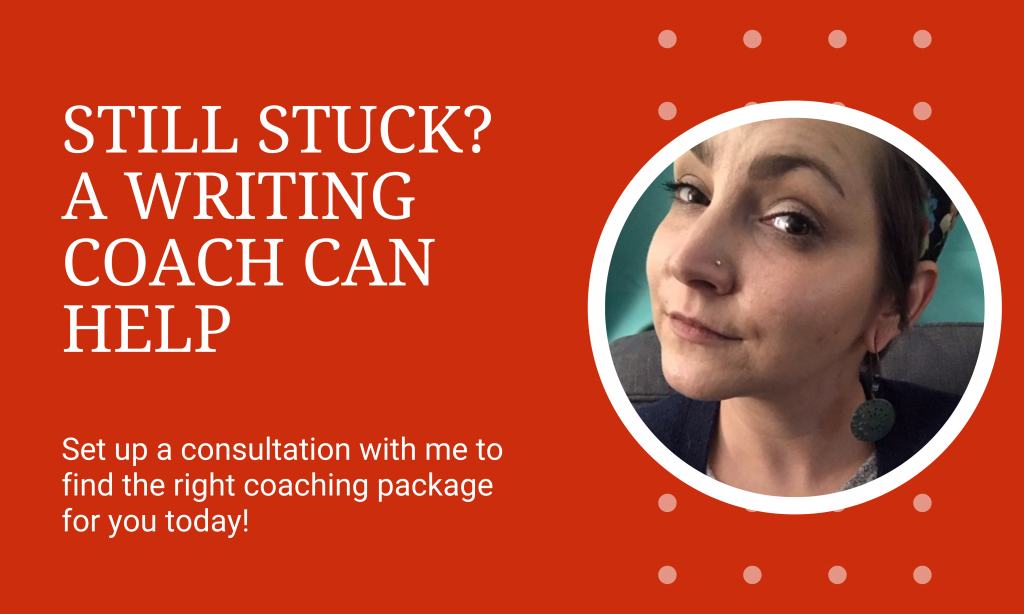
16 Solid Blog Monetization Strategies to Implement Immediately
Disclosure: My blog contains affiliate links, which means I may receive a small commission on qualifying purchases. Although, I only link to high-quality writing-related companies and products. Whether or not you buy is entirely up to you. I’d recommend them either way.
Do you want to earn a living by writing online?
If you Google "how to make money blogging," most of the articles you see suggest the same advice. Create stellar content and eventually monetize your audience. But if you want to run a successful business, it's best to start thinking about the monetization strategies you'll use from the get-go.
Let's talk about one of the biggest strategies for making money through your writing from day one: blog monetization.
What is monetization? Blog monetization is a fundamental online marketing method and the main way bloggers get paid. Monetization is what we call it when you earn revenue through your blog's content.
But there are many ways for bloggers to earn money online. In this article, I'll show you how to monetize a blog. Use these 16 strategies to help you build a successful business.
When Can You Start Monetizing?

Before you can monetize your blog, you need the numbers on your side.
For this, you should have a dedicated audience and powerful content. Your blog should fulfill a need and focus on a particular niche. You'll need this to define a clear target audience and keep them coming back for more.
Next, achieve growth. Build up your audience numbers and engagement by interacting with your readers, guest posting on similar publications, and publishing articles on LinkedIn or Medium.
With the numbers on your side, you become a well-known expert in your field. That's when you're really ready to earn a full-time living from your site.
That said, you can implement monetizing strategies as soon as you launch your blog. You may not earn enough to live from your content right off the bat without the numbers. However, having a long-term plan is always beneficial.
Many bloggers begin writing for fun, without thinking about generating revenue.
I was one of them. When I kicked off BeWrit in 2015, I wanted to connect with other writers and authors. It was about community, mentorship, and finding like-minded individuals on the internet.
I have no regrets. But the blog didn't bring in the type of cash-flow it was capable of for years.
If you run your blog like a business, you should at least have a plan or some ideas to earn money.
So here's my advice: Run your blog like a business from the start, and you'll make money from your passion faster. Find a monetization strategy that's right for you and aligns with your blog. If blogging is only a hobby for you, consider your options and keep doing you.
16 Solid Blog Monetization Strategies

Any of the following blog monetization strategies are accessible for varying industries and niches. Some are more effortless than others. However, they're all solid options for bloggers to generate revenue.
1. Join Affiliate Programs
You can join some affiliate programs immediately when you launch a blog. As an affiliate, you partner and promote a brand.
In this partnership, a merchant pays you a small commission (usually in varying percentages) for suggesting their product on your blog. You'll typically receive a code or links to use to share their products and services on your blog. It's a win-win for both parties.
You could sell:
- Digital products
- Physical products
- Online courses
- Services
The options are limitless, so here is a list of the top affiliate products worth selling in 2021.
However, the downside is that the revenue you generate through affiliate marketing (especially when you're a beginner) is performance-based. The money you make depends on your traffic and audience. For the best results, you want to have a similar audience to the brand and find creative ways to weave their products into your organic content.
A few affiliate programs that are open to beginners include:
2. Accept Donations
Asking your audience for donations is a perfect ad-free way to go monetize your blog. Avoid pushy sales pitches by leaving a transparent note expressing your gratitude and welcoming their support.
Donations could earn you more if you're blogging about a cause or involved in social justice, nonprofit work, or a principle that people want to stand behind. Show your thanks by providing your audience with free content in return. This strategy doesn't work as well if you're selling content on your blog already.
By the way, I accept donations to keep BeWrit's resources free. If you enjoy the site, please consider a one-time or recurring donation.
3. Get Backlinks
Old-school advice for online writing says to keep focusing on quality content and the audience will come eventually. But in 2021, it's just not true.
Writing for free 24/7 will only cause you to burn out. Plus, you can't build traffic to your blog without building relationships in your industry.
An easy way to do so is to ask other blogs for backlinks. Reach out to similar sites in your niche or write guest posts for other publications. This process allows you to build links (and your site's authority), positioning you as an expert in your field.
4. Write Sponsored Posts
Creating sponsored blog posts is an effective and powerful way to monetize your blog. It's a reliable advertising option for brands as well.
Companies will pay you to publish a sponsored post on your blog. Sponsored content typically highlights a product or service, so a requirement is that you mention and link to the company somewhere in the article.
The downside is that some brands may ask to insert cheesy phrases in your writing. Think product reviews or how-to articles. You can spot sponsored content because it requires a disclaimer.
But unlike working with affiliate programs or ads, you know exactly how much revenue you will generate each month.
To find a brand to partner with, try cold emailing or calling. Find businesses that fit your audience and reach out to them directly. Inquire about their partnership opportunities and explain your blog's value. Tell them how you writing sponsored blogs would benefit their business, including your traffic and info on your fans.
5. Land a Brand Sponsorship
A similar partnership to sponsored blog posts is to get the brand to represent your website or entire online presence itself. Establishing a paid partnership with a brand allows you to skip writing product reviews or entire posts about the brand.
Instead, you feature the brand on your blog and/or newsletter. For example, you may add their logo to the header with a short note thanking them for their support.
Find a brand that fits your niche using the same tactic I mention for sponsored posts. Make sure you genuinely enjoy the brand and their products. Sign the agreement only if you understand the brand's expectations, so you know what they require.
However, getting a brand to represent your entire website could require you to have a larger following.
6. Display Online Ads
Ads are one of the easiest, most reliable blog monetization tools. The effort is minimal. Just sprinkle ads throughout your website and you earn from each click.
You have many opportunities, such as:
- Google Adsense: Set up Google Adsense for automatic ads. You can definite the industry or category of the ads your blog displays, but there's less decision-making about the ads on your part.
- Make Your Own Ads: If you have your own products and services, use Canva to make ads for your paid content and display them directly on your website.
- Place Sponsored Ads: Like other sponsorship opportunities, you could display ads of your sponsor's products and services on your blog and email newsletter. (We have opportunities to advertise here on BeWrit if you have a writing-related product/service).
The earnings may trickle in slowly at first. But with more traffic, your revenue will quickly grow. Another tip is to use ads that align with your audience's interests to earn more.
7. Create a Paid Membership Plan
Your blog is much more than an online diary. It's full of your experience and expertise.
Set your best content aside, offering it to your audience for a monthly fee. A paid membership plan provides special value to your readers that they can't get from your free content alone.
Paying readers particularly enjoy premium content they can't get anywhere else. You could focus on professional advice, training, or tips. Exclusive content may also fall under a monthly subscription plan.
Whatever you do, show your audience why the premium content is worth their money. Lure new readers to the plan by providing free samples.
8. Promote Your Services
One of the first tips I learned when I started blogging was to use your blog to promote a service. Share your unique knowledge on your blog, and offer your services in your content.
You could offer services like:
- Writing
- Editing
- Book reviewing
- Graphic design
- Photography
- Virtual assistance
- More
The best way to use this tactic is to find creative ways to convert your know-how into useful training for your readers. Consider what you can offer on your blog based on the niche. For example, I promote my writing and editing services to BeWrit.com's audience.

9. Kick Off a Consulting or Coaching Business
Another type of service you could offer to your audience is consulting or coaching. After you have built authority on the internet, you can supplement your content by teaching your audience something.
For example, I started by offering writing and editing services right here on BeWrit. But as the site grew, I realized the opportunity I had to train the authors and writers on my site through writing coach services.
10. Sell Products or Merchandise
Merchandise is another great method to monetize your blog.
Skip suggesting other brand's products altogether. Create your own products and merchandise to sell on your blog. You could make digital or physical products, or stamp general products with your logo.
Pick products to sell that are inspired by your content or sell items related to your niche. Then, add an online store to your website.
11. Host a Virtual Summit
A virtual summit is an online event like a conference. It's often a video interview with at least 20 industry experts who discuss a particular topic.
You can charge for admission or offer the first 24 to 72 hours of the summit for free, with the chance to buy an all-access pass to keep viewing the video after a certain amount of time.
Virtual summits allow you to earn both long and short-term income from viewers. But they also provide an excellent marketing strategy to help generate interest in your blog, so this tactic could boost your traffic, expand your reach, and allow you to create long-term relationships with other industry influencers.
12. Launch a Webinar
A webinar allows you to teach your audience a new skill and build deeper relationships. It can also boost a blog's engagement.
Create a webinar that your audience can't find anywhere else. There are many options. You could use a workshop, slide show presentation, video tutorial, or audience Q & A session. Focus on a subject similar to your blog's content, but with more insights and actionable takeaways.
13. Begin a Podcast
Podcasts are insanely popular today. This rise in listeners makes podcasts a huge advantage for exposure and traffic.
Starting a podcast is a creative way to streamline your content. It opens your audience up to people who don't read daily or an additional blog monetization method.
The content could include new insight or repurpose your existing blog posts. You can sell sponsorship slots similar to short radio ads on your podcast to businesses in your industry. Like ads and sponsored posts, you may not have full control over the script, though.
You may also need to purchase expensive equipment and editing software. Some of the things you'll need include:
- A microphone
- Headphones
- Audio editing software
- Podcast hosting
14. Design Online Courses
Courses are another fantastic approach because they place you as an industry authority and allow you to teach your audience something new. They also drive audience engagement online.
Think about the content already on your blog and how they might come together in an online course. Then, make a video. Offer short videos for free and save in-depth content for premium videos and paid viewers.
You could host the video on a site like Coursera, Udemy, or Skillshare. Using a platform like this saves you time on marketing the course, but you must pay the site a share of the profits.
Or, hosting the video on your own site allows you to sell the course or make the content available for download. You set the price. Make sure paid video tutorials provide more insight than your audience can find for free online for the best results.
15. Write & Sell eBooks
With a fan base, you can offer seriously in-depth content. An eBook would provide your readership with a new angle on your content, a connection between the topics you cover in blog posts, or a new theme.
Once you have an idea, there are many options for creating the eBook. You could use a platform like Blurb or Canva to design the book and sell it on your site. Selling the eBook on your website allows you to keep all the profits.
Again, there are many ways to implement this strategy. The best method for you depends on your industry and site. You could use a WordPress plugin like Easy Digital Downloads.
If you publish on Amazon Kindle, you don't have to market the book alone. However, the site leaves you with only 70% of the earnings.
Set up a consultation to discuss how I can help you determine the best course of action for your eBook.
16. Flip the Blog
Just like houses, you can flip your blog by selling it. If you build up enough traffic and domain authority, other websites will show interest in paying for your blog.
How? Try Flippa. It's made for selling websites, and you'll find plenty of serious buyers. Analyze your blog's value to figure out how much it's worth, then negotiate.
You can also try Blogs For Sale, where your rep will also list your blog on Flippa. The benefit here is that you can skip paying extra Flippa fees.
However, you must have a high-quality website to earn decent money for your blog. Your blog is probably viable for this option only if it's growing in value, both through organic search and social media, and already features multiple monetization streams.
The Bottom Line

Monetizing a blog is one of the most widespread problems that bloggers face. Writing alone will not make enough money to sustain your website. But today, it's easy to monetize and maintain a WordPress blog with a few hundred dollars or zero upfront cost.
Use the ideas above to start generating revenue from your blog. The options near the top are ideal for beginners.
As your blog traffic grows, expand to include a few different monetization methods. That's when you'll succeed in earning a full-time living and can quit your day job.
Do you know other powerful monetization tools that are not already listed in this post? Share your experience and suggestions in the comments.







